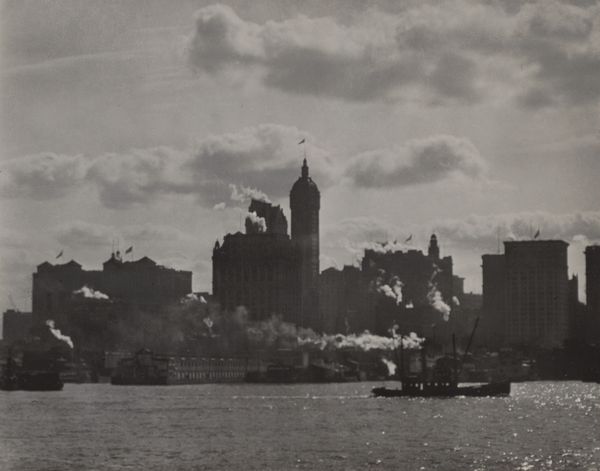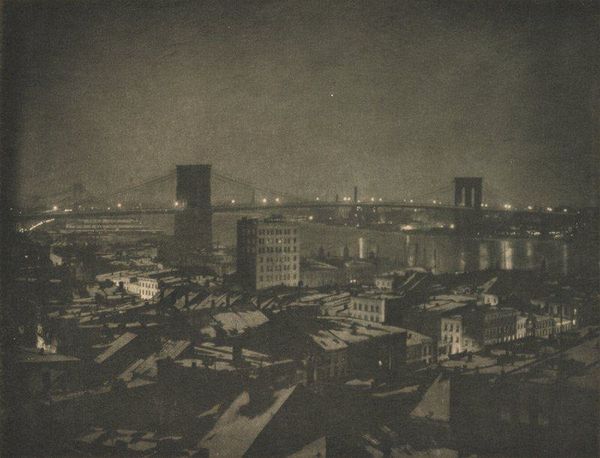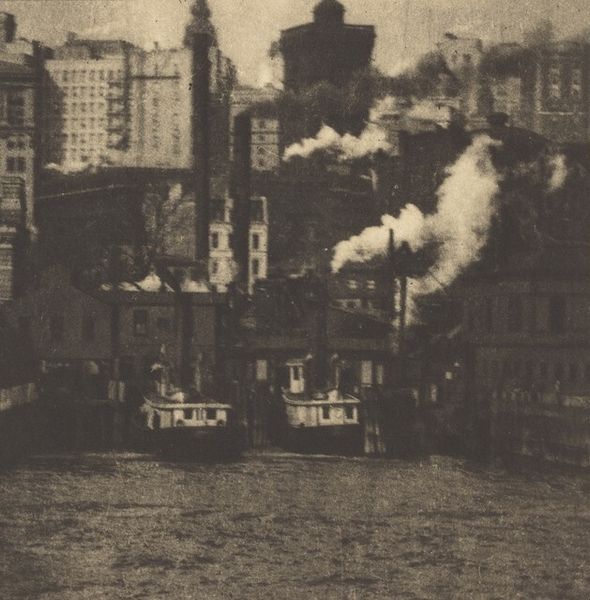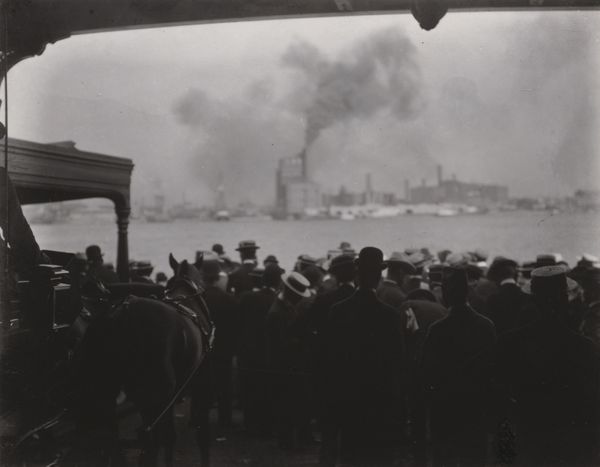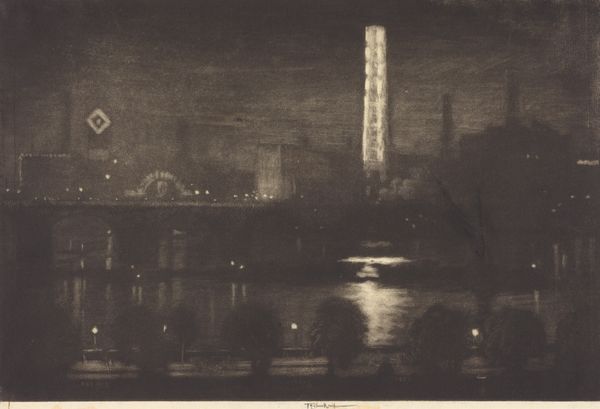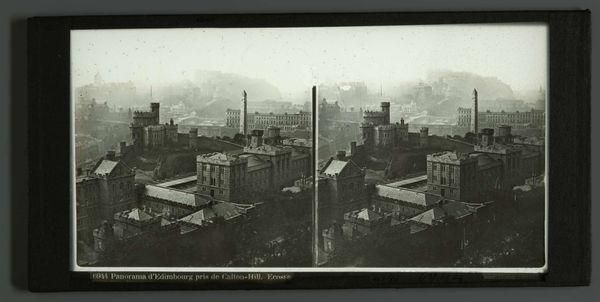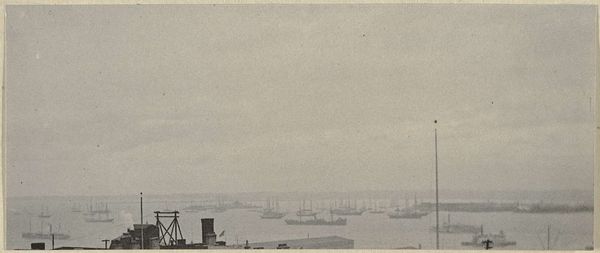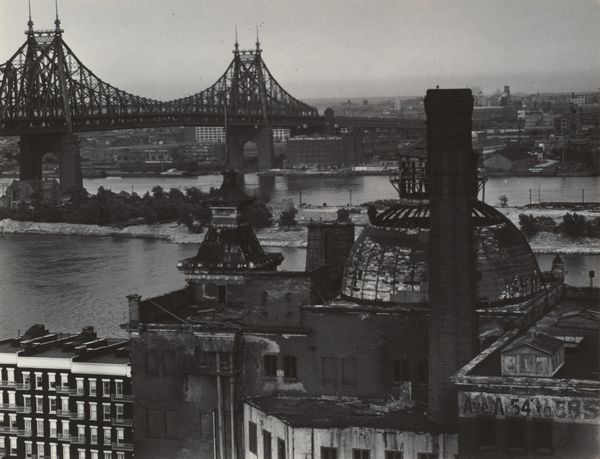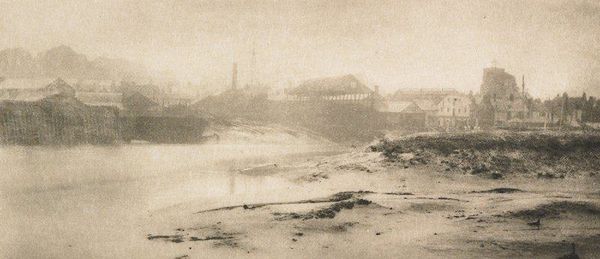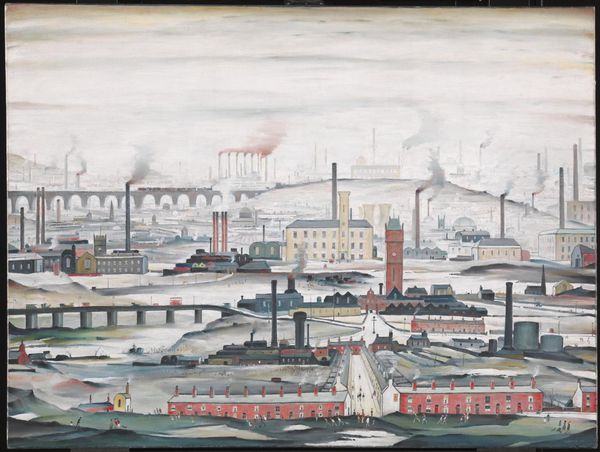
photography
#
pictorialism
#
photography
#
monochrome photography
#
cityscape
#
skyscape
#
modernism
#
monochrome
Dimensions: sheet (trimmed to image): 9 x 11.7 cm (3 9/16 x 4 5/8 in.) mount: 27 x 33 cm (10 5/8 x 13 in.)
Copyright: National Gallery of Art: CC0 1.0
Curator: Let's turn our attention to this evocative cityscape by Alfred Stieglitz, titled "From the Shelton, New York, Looking East," created around 1926 or 1927. It’s a striking example of his Pictorialist photography. Editor: Immediately, I'm struck by the overwhelming grayness. The photograph feels incredibly dense, almost suffocating with its tonal uniformity. The sky presses down, mimicking the industrial haze below. Curator: Stieglitz’s process here is fascinating. He moved away from manipulating his prints in the darkroom, emphasizing the camera's ability to capture a "pure" vision. Yet, Pictorialism's influence remains, especially in its romantic rendering of an urban landscape. Think about the social context: this is the height of industrialization in New York, yet we're offered a hazy, almost dreamlike version of progress. Editor: Yes, but consider how he structures the composition. The photograph is divided into distinct horizontal layers: the water, the skyline punctuated by factories and buildings, and the oppressive sky. The lines created by the buildings are echoed in the straight lines of the smokestacks and skyscrapers. Notice how he guides the eye through the image, using contrasting textures to highlight the bleak modernity of the urban sprawl. Curator: Precisely! Stieglitz was deeply engaged in promoting photography as a fine art. This particular shot embodies that aspiration. The materials—the gelatin silver print—are deliberately deployed to achieve a certain aesthetic effect. It’s a crafted image meant to elevate photography beyond mere documentation, which makes it more impactful as it shows labor through an artist's view. Editor: For me, the success lies in how Stieglitz merges form and content. It's about the formal interplay of light and shadow that creates the picture. Even in the darkness, there is beauty in its intricate layering. The atmospheric perspective softens the hard edges of the city, making the landscape palatable, and somewhat beautiful, although, at first, dark and imposing. Curator: Indeed, it's a picture deeply rooted in its time. Editor: Yes, but one can say that it rises above time because of its delicate play of light.
Comments
No comments
Be the first to comment and join the conversation on the ultimate creative platform.

